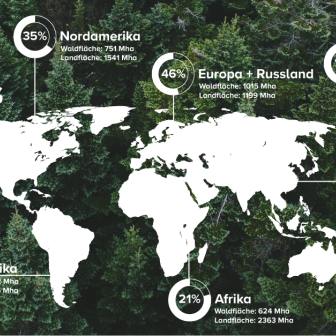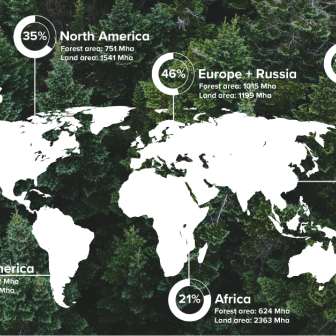Climate Action Insights: Earth Day - and how we should treat it
April 21, 2021Humans and climate are putting pressure on the forest
The year 2021 also marks the start of the UN Decade on Ecosystem Restoration. Until 2030, the focus will be on how the Earth's diverse biospheres can be protected and reactivated. In this inaugural year, two consecutive days play a role: Earth Day on 22 April with the motto, "Restore our Earth", and Arbor Day on 25 April.
Of course both are thematically closely linked, as forests cover about one third of the Earth's total land mass. However, let us not mix up these dates as celebration days, but rather as necessary days of action. They are intended to get us to act so we take responsibility and the right direction to net zero. Our forests are not in a good shape - neither in our local region, nor in South America, Africa or elsewhere in the world.
Robin Stoffers, Head of Project Development at ClimatePartner, explains what holistic aspects are important in forest protection:
Currently, about one third of the Earth's land mass is still covered by forests. But the rate of deforestation is accelerating from year to year. On the one hand, forests are threatened by the effects of climate change through drought, pest infestation, forest fires, and flooding. On the other hand, human actions such as deforestation, conversion to monocultures, and plantations or the withdrawal of groundwater are affecting them in different ways. Deforestation and permanent land-use changes for agriculture and livestock farming even account for almost a quarter of the man-made greenhouse gas emissions recorded worldwide since 1961.
How to protect forests properly: conversion and reforestation
It is therefore important to protect existing forests, improve their resilience, and grow new forests. Where the interests of humans and nature meet, it is important to ensure the two can co-exist. Forest protection means no more and no less than preserving or restoring ecosystems, and having to take into account a wide range of biological complexities. To this end, we at ClimatePartner have been working for many years with recognised experts such as the Mountain Forest Project in Switzerland, the Schutzgemeinschaft Deutscher Wald e.V. in Germany and many other international organisations.
Preserve instead of destroy: the REDD+ mechanism
One mechanism in forest protection that plays a central role in many international carbon offset projects is the REDD+ mechanism (Reducing Emissions from Deforestation and Degradation) created by the United Nations. It aims to avoid CO2 emissions associated with deforestation. Instead of earning money by logging trees, local communities can instead earn their livelihoods by preserving and protecting them. In return, carbon offset certificates, so-called carbon credits, are generated. The sale of which makes forests more economically attractive than other forms of land use. The proceeds from the credits also provide the communities with new perspectives in terms of education, alternative sources of income, and environmentally sustainable agriculture.
Measurability and reliability
In order for regional environmental protection projects and international carbon offset projects to be valid and recognised, forest protection projects must be carried to highest standards. Site factors must be examined, data must be accurately recorded, and the performance of different tree species, and the CO2 savings they achieve, must be precisely measured and permanently monitored. Only in this way can they contribute real and reliable benefits to climate action.
Further information on forest protection and the REDD+ mechanism can also be found here:
https://www.climatepartner.com/en/importance-of-the-REDD-mechanism
https://www.reddimpact.com/articles/redd-plus-proven-solution

